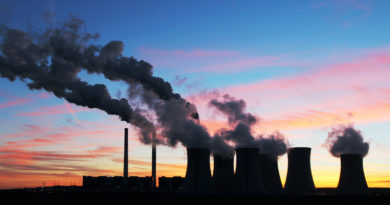“ We may have partially missed the bus”

Even as solar business has been in a galloping mode in the last couple of years in the country, most of the discourse on the current trends is dominated by the growing dominance of Chinese panel imports. China has emerged as the ultimate power house in panel manufacturing supplying as much as 70 percent of the current global demand and in the case of India, its contribution is even heftier – 90 percent. So has the domestic manufacturers missed the bus in scaling up their production capacity even as the solar momentum intensifies? Sunil Jain, CEO & ED, Hero Future Energies responds to this moot point in an exclusive conversation with Ritwik Sinha…
This issue of providing protection to domestic manufacturers and create a more conducive environment so that their share in the growing Indian solar market go up, does it have any validity? Now with a visible momentum in the space and more capacity addition resulting in more demand for modules, the shortfall obviously would be filled with imports if domestic manufacturers are incapable of providing the required volume. So what is this fuss all about?
I recall, during our MBA days, we were taught that goods move from more efficient countries to less efficient countries and this is how exim trade happens. And that is what is happening in the solar business. China is more efficient and it has swarmed the world. We are trying to reinvent the wheel. We keep saying that China is giving huge incentives. But please understand that China has developed economies of scale across the value chain including the raw material. But we are addressing one end of the value chain while ignoring other. And this will not help in pushing manufacturing to the desired level. You will need to develop expertise in the complete value chain. Look at steel business today. Leading Indian companies have the complete value chain under their command. They have set up huge plants, exporting and are competitive in the international market. These are the sectors where even anti-dumping duty will work because countries do tend to impose duties and give incentives to encourage their manufacturers. To make something similar to happen in the solar business, having command of complete value chain is a must.

So have we missed the bus on solar manufacturing?
I think, we have partially missed the bus. We can still recoup but then a lot of incentives will be required from the government.
What is the harm in reconciling to the fact that we will have to live and move along with imported panels?
While you may be right in that sense, I still believe we have another 80 GW capacity to come up. And that is a huge capacity. So all is not lost and we have to act and install capacity in the next three years. The government also has the social responsibility to create jobs and this sector can respond provided you have right policies.
Are we creating mountain out of a mole?
Not exactly. It is already a mountain. If you look at solar panel imports, it almost amounts to 90 percent of our demand. And even the other 10 percent, half of them is imported.
My point is simple: do we have the time to hold ourselves for domestic manufacturers to pick up scale?
No, we don’t need to hold ourselves back. Let’s assume that in the next three years, we reach another 30-40 GW. We will still have another 40-50 GW target. In this kind of high growth scenario, we can always think of adding 20 GW capacity from the domestic manufacturing side. You are always short on foreign exchange and you can’t keep on doling it out. Even in the sector like electronics where imports is as high as $45 billion annually, the government is talking developing indigenous capability. Our problem is: we look for market and then think of manufacturing capability. We need to emulate Chinese example. They develop manufacturing scale first and then look for the market. To beat them at their game, you will have to aspire for the grand scale right from the beginning.
When it comes to solar business, China has probably moved to the next curve as they are focusing on large scale capacity storage innovations. Where are we?
China, no doubt, has moved ahead in solar panel manufacturing capacity. But then, all is not lost in storage today. It is yet to start off in a big way. The only problem is: when do we start? If government is determined and we start in next two years, we are very much there. Today we don’t see a visibility in terms of how we will push storage manufacturing segment. We may end up just being as panels if there is no determined push to the storage manufacturing.




